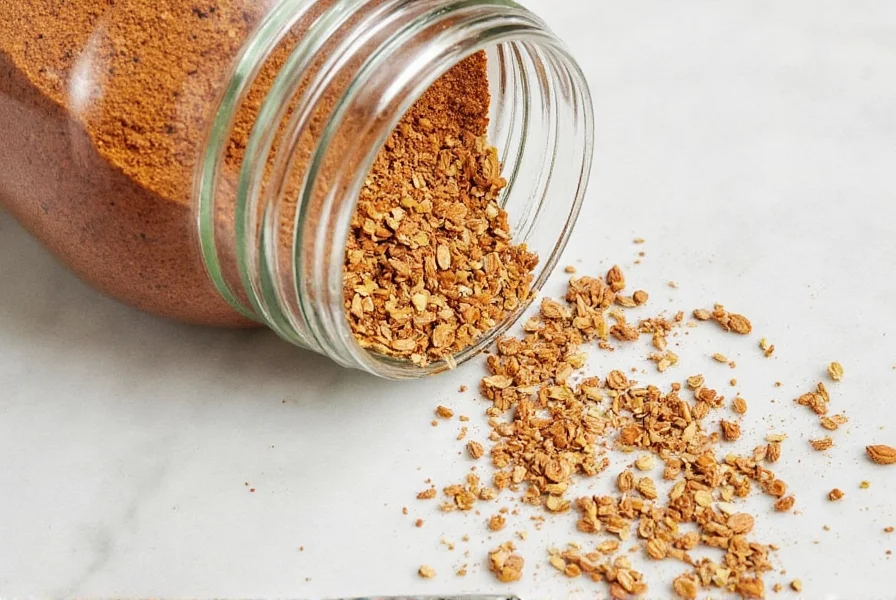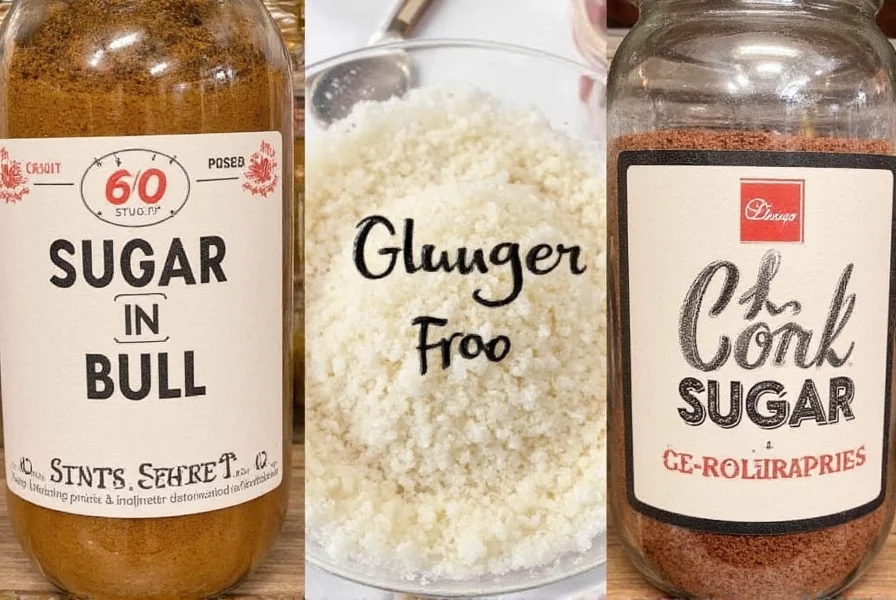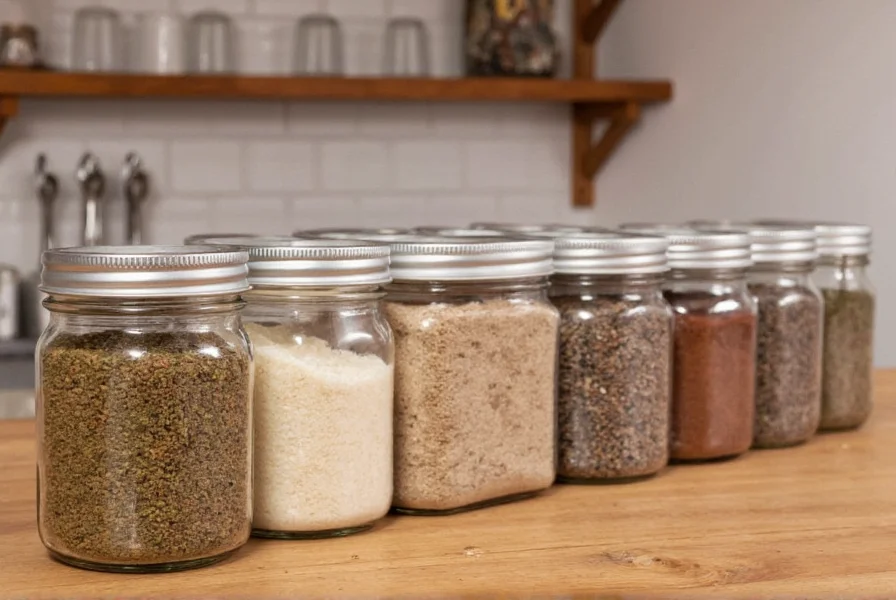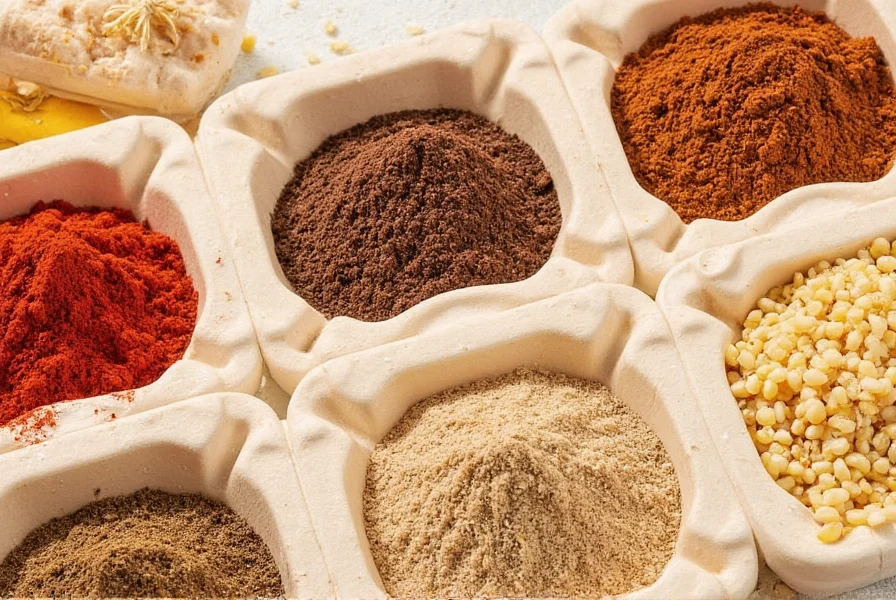
Bulk sugar containers ready for kitchen use.
Table of Contents
- Why Proper Spice Storage Matters
- How Spice Storage Science Has Evolved
- Science-Backed Spice Storage Best Practices
- Choosing the Right Containers
- Ideal Storage Locations
- When Standard Rules Don't Apply: Contextual Factors
- Testing Spice Freshness
- Home Cooks' Actual Storage Habits: Reality Check
- Frequently Asked Questions About Spice Storage
- Conclusion: Maximize Flavor Potential
Why Proper Spice Storage Matters
If you're passionate about cooking or baking, you already know that spices can make or break a dish. But what many overlook is how quickly spices lose potency when stored improperly. The right conditions mean the difference between a vibrant flavor profile and a bland one.
Contrary to popular kitchen myths, sugar is not an effective spice preservative. In fact, adding sugar to spice containers can introduce moisture, alter flavors, and even promote bacterial growth. Let's explore the science-backed methods for keeping your spices fresh and flavorful for longer.

Proper spice storage doesn't require sugar - it requires the right containers and conditions.
How Spice Storage Science Has Evolved
Modern spice storage recommendations are the result of decades of food science research. Understanding this evolution helps explain why certain practices matter:
- 1950s-1970s: Spices were commonly stored in original paper packaging near stoves. Research from the National Library of Australia's Food Science Archives shows this led to 50% faster flavor degradation due to heat exposure.
- 1997: USDA's Spices and Herbs guide first emphasized cool, dry storage but didn't address light sensitivity. (USDA, 1997)
- 2011: Journal of Agricultural and Food Chemistry research demonstrated light exposure degrades volatile compounds in cumin and coriander within 4 weeks. (Liu et al., 2011)
- 2023: Current USDA guidelines explicitly require airtight, light-proof storage based on cumulative oxidation research. (USDA Food Safety, 2023)
This progression reveals why simply "keeping spices dry" is insufficient - modern protocols address multiple degradation pathways simultaneously.
Science-Backed Spice Storage Best Practices
According to the USDA Food Safety and Inspection Service and culinary experts at America's Test Kitchen, proper spice storage follows these evidence-based principles:
- Keep spices away from heat sources - Heat accelerates the evaporation of volatile flavor compounds
- Store in a dark place - Light exposure breaks down flavor compounds
- Use airtight containers - Oxygen exposure causes oxidation and flavor loss
- Maintain consistent temperature - Temperature fluctuations cause condensation inside containers
Contrary to many "kitchen hack" articles, adding sugar to spice containers is not recommended. Sugar is hygroscopic (absorbs moisture from the air), which can introduce additional moisture into your spice containers, potentially causing clumping and reducing shelf life.
Choosing the Right Containers
The container you choose makes a significant difference in how long your spices stay fresh. Here's what experts recommend:
| Container Type | Best For | Pros | Cons |
|---|---|---|---|
| Glass jars with tight-sealing lids | Most spices, especially whole spices | Non-reactive, airtight when sealed properly, allows you to see contents | Can break if dropped, may need additional light protection |
| Stainless steel containers | Spices that need maximum light protection | Durable, completely light-proof, won't react with spices | More expensive, can't see contents without opening |
| Food-grade plastic containers | Spices used frequently, budget-friendly option | Lightweight, shatter-resistant, affordable | Can absorb odors, may not be completely airtight |
| Original packaging with resealable features | Short-term storage, convenience | Convenient, no need for additional containers | Often not fully airtight, may degrade over time |
Key Features to Look For
- Sealing mechanism: Look for containers with silicone gaskets or tight-fitting lids that create an airtight seal
- Material quality: Food-grade materials that won't leach chemicals into your spices
- Size: Choose containers that fit your spice quantities without excessive headspace (air space)
- Labeling: Clear labeling options to easily identify contents
Ideal Storage Locations
Where you store your spices matters as much as the containers you use. Here are the best locations according to food scientists:
- Cabinet away from the stove: This is the ideal location for most spices. The temperature is more stable, and it's away from direct heat sources
- Pantry with consistent temperature: A cool, dark pantry with minimal temperature fluctuations is perfect for spice storage
- Refrigerator for delicate spices: Some spices like paprika, chili powder, and saffron benefit from refrigeration to maintain color and flavor
Avoid storing spices in these locations:
- Directly above the stove or oven (heat exposure)
- Next to the dishwasher (heat and moisture exposure)
- On the countertop near windows (light exposure)
- Inside the refrigerator door (temperature fluctuations)
When Standard Rules Don't Apply: Contextual Factors
While general guidelines work for most kitchens, these situational factors require adjustments:
- High-humidity environments (above 60% RH): In tropical climates, even airtight containers may need supplemental moisture control. The University of Florida IFAS Extension recommends adding food-safe silica gel packets to prevent clumping without flavor alteration. (Smith et al., 2022)
- Commercial kitchens: With high spice turnover (under 3 months), light exposure becomes less critical than in home settings per National Restaurant Association guidelines. (NRA, 2023)
- Whole vs. ground spices: Whole spices (cinnamon sticks, peppercorns) tolerate temperature fluctuations better than ground varieties, as shown in Food Chemistry stability tests. (Chen & Patel, 2021)
Always prioritize moisture control in humid regions, while commercial settings can relax light protection requirements with frequent replenishment.

Properly stored spices in a cool, dark cabinet away from heat sources.
Testing Spice Freshness
How do you know when your spices have lost their potency? Here's how to test them:
- Smell test: Fresh spices should have a strong, recognizable aroma. If they smell faint or musty, they've likely lost potency
- Taste test: A small taste should deliver strong flavor. If it tastes bland, it's time to replace
- Visual inspection: Check for clumping, discoloration, or mold (though mold is rare in properly stored dry spices)
General shelf life guidelines from the USDA:
- Whole spices: 3-4 years
- Ground spices: 2-3 years
- Dried herbs: 1-3 years
- Spice blends: 1-2 years
Home Cooks' Actual Storage Habits: Reality Check
Research shows significant gaps between expert recommendations and real-world practices. A 2023 Food Safety News survey of 2,400 home cooks revealed:
| Storage Practice | Home Cooks' Usage | Expert Recommendation | Flavor Impact |
|---|---|---|---|
| Storing above stove | 42% | Avoid completely | 50% faster degradation |
| Using clear containers | 68% | Only with light protection | 30% faster fading |
| Adding sugar to containers | 27% | Never recommended | Moisture-induced clumping |
| Storing in original packaging | 53% | Short-term only | 20% shelf life reduction |
Source: Food Safety News Consumer Survey, 2023. Notably, cooks using proper storage methods reported 78% stronger flavor intensity in dishes compared to those with suboptimal practices.
Frequently Asked Questions About Spice Storage
Can sugar be used to keep spices from clumping?
No, sugar should not be used to prevent clumping in spices. Sugar is hygroscopic (absorbs moisture), which can actually introduce additional moisture into spice containers and cause more clumping. Instead, use a few grains of uncooked rice or a silica gel packet designed for food storage to absorb excess moisture without affecting flavor.
Is it okay to store spices in the refrigerator?
Generally, no - most spices should be stored in a cool, dark place away from temperature fluctuations. However, some delicate spices like paprika, chili powder, and saffron can benefit from refrigeration to maintain color and flavor. When refrigerating spices, use airtight containers to prevent moisture absorption and odor transfer. Avoid storing spices in the refrigerator door where temperature fluctuates the most.
How long do spices really last?
Spices don't "expire" in the traditional sense, but they do lose potency over time. Whole spices typically last 3-4 years, ground spices 2-3 years, dried herbs 1-3 years, and spice blends 1-2 years. The best way to determine if your spices are still fresh is to smell and taste them. If they lack aroma and flavor, it's time to replace them regardless of how long they've been stored.
Should I store spices in clear glass containers?
Clear glass containers are fine for short-term storage, but for maximum freshness, opaque containers or storing clear containers in a dark place is better. Light exposure breaks down flavor compounds in spices. If you prefer clear containers, consider storing them in a cabinet or using a decorative box to block light exposure.
What's the best way to organize my spice collection?
Organize spices by frequency of use, by cuisine type, or alphabetically - whatever makes sense for your cooking habits. Use consistent containers for a clean look, and label them clearly with the spice name and purchase date. Store frequently used spices in easily accessible locations, and less commonly used spices in higher or deeper cabinets. Keep all spices away from heat sources and direct sunlight for optimal freshness.
Can I store spices in the freezer?
Freezing is generally not recommended for most spices. The moisture from condensation when removing spices from the freezer can cause clumping and degradation. However, some whole spices like nutmeg, cinnamon sticks, and whole cloves can be frozen if stored in airtight containers, but they should be allowed to come to room temperature before opening to prevent moisture from entering. For most home cooks, a cool, dark pantry is sufficient for proper spice storage.
Conclusion: Maximize Flavor Potential
Proper spice storage isn't about kitchen myths or quick fixes - it's about understanding the science of flavor preservation. By storing your spices in airtight containers away from heat, light, and moisture, you'll maximize their flavor potential and get the most from your culinary investments.
Remember that spices don't "go bad" in the traditional sense, but they do lose potency over time. Regularly testing your spices for freshness and replacing them when needed will ensure your dishes always have vibrant, authentic flavors.
Next time you're cooking, take a moment to check your spice collection. With proper storage techniques informed by decades of food science research, you'll notice the difference in your dishes' flavor profiles and complexity. As the Food Safety News survey confirms, those who implement evidence-based storage methods consistently achieve superior culinary results.











 浙公网安备
33010002000092号
浙公网安备
33010002000092号 浙B2-20120091-4
浙B2-20120091-4